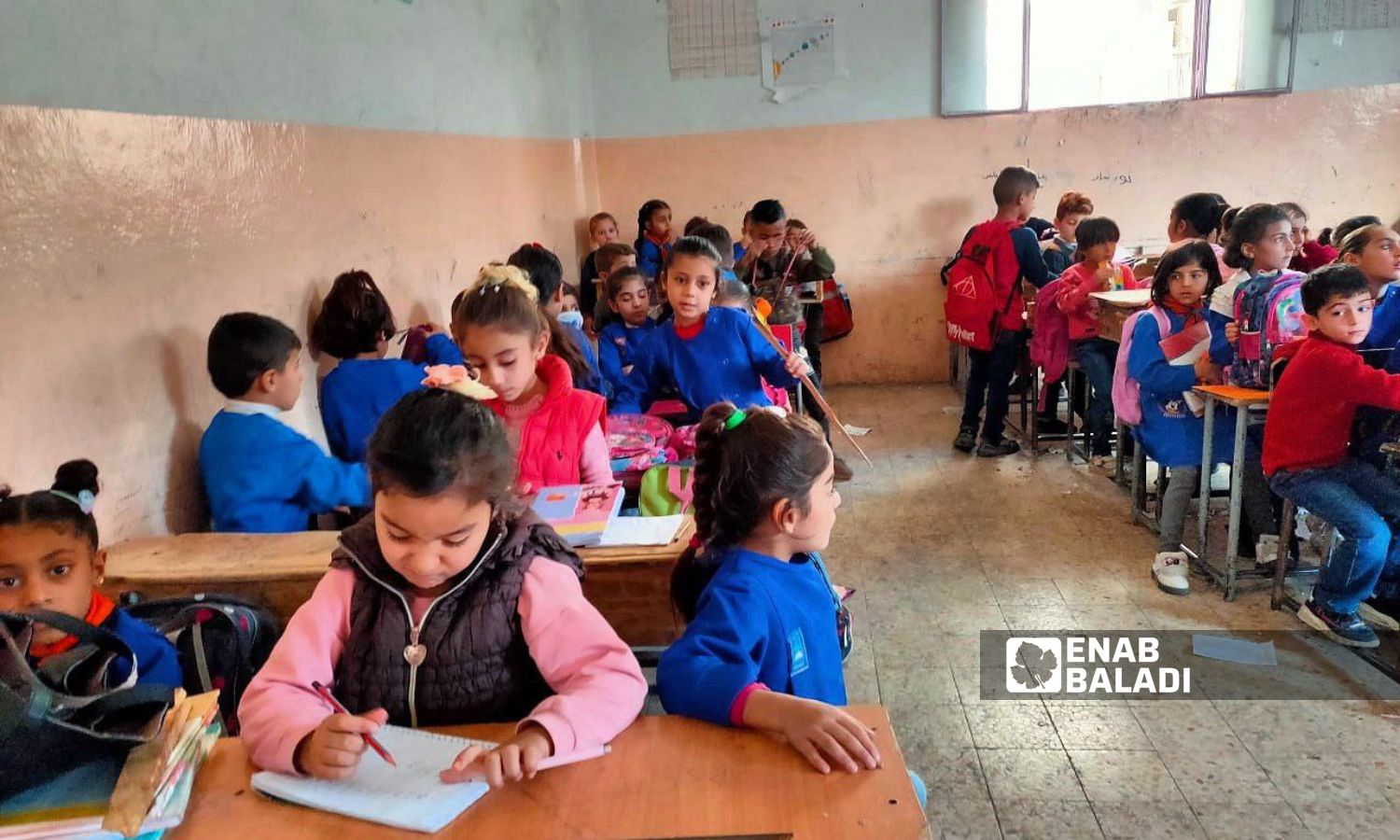



Qamishli – Majd al-Salem
Families in the city of Qamishli, eastern Syria, find themselves facing the same difficulties at the beginning of each school year, due to the essentials needed by their children and the high tuition fees. These remain significant challenges, especially under the severe economic conditions the region is experiencing.
The concerns of the families precede the school year, which begins on September 8. The scarcity of books and their high prices, along with the cost of stationery and daily transportation, form obstacles for parents.
Mariam Safouq (39 years old), residing in Qamishli, faces difficulties in paying the school fees for her three children every year, which see a rise at the beginning of the school year without considering the parents’ economic conditions, as she explained.
Safouq added to Enab Baladi that the “search journey” for a school suitable for the family’s income is exhausting, as prices are not fixed and sometimes increase from one term to another.
She recalled that in 2023 the tuition fee for a single student was 450,000 Syrian pounds ($30 USD), but in the second term, the school administration raised the fees to 600,000 pounds per student ($40 USD).
Safouq’s struggle is similar to that of thousands of families, especially regarding school fees, which Malik al-Wahhab (46 years old), also a resident of the city, sees as “the heaviest burden.”
Al-Wahhab, a father of two middle school students, mentioned that parents are constantly searching for a nearby school with suitable fees. Some private school fees reached about 1,000,000 Syrian pounds ($66 USD) per term in 2023.
According to what Enab Baladi learned from the residents, the issue becomes more difficult if the family has children in primary school, as they have to contract with minibusses or taxis to transport the children to school, with a monthly fee ranging between 50,000 to 100,000 Syrian pounds ($7 USD) per student.
The fees vary depending on the distance and the type of vehicle, while secondary or middle school students can walk within the city.
In the past, every neighborhood in the city had one or two schools for primary students, making the school close to the residence.
With the Autonomous Administration of North and East Syria (AANES) controlling the schools in the city and banning the teaching of the regime’s curriculum, residents are forced to send their children to private or government schools within the security zone (controlled by the regime forces).
Hussam al-Wahhab (50 years old), residing in the Corniche neighborhood, told Enab Baladi, while searching for a suitable school for his children about a week ago, that the school should be appropriate in terms of term fees, teaching quality, number of students per class, and proximity to the residence.
Al-Wahhab added that achieving this balance is difficult under the current circumstances, as free public schools are “very crowded” with students, with the number of students in one class reaching 45.
He considered that overcrowding negatively impacts the quality of education, especially for first and second-grade students who need close attention from the teacher during lessons. He pointed out that private schools no longer adhere to a specific number of students per class, as making a profit has become “more important.”
Al-Wahhab depends on the money sent by his eldest son, a refugee in one of the European countries, to cover his son’s educational expenses. Without that, he wouldn’t be able to provide an “educational opportunity” for his son, as his monthly salary does not exceed 500,000 Syrian pounds ($32 USD).
Like al-Wahhab, many families are waiting to receive remittances from abroad, especially with the approach of the school year, to cover school expenses such as fees, stationery, clothing, and transportation. The remittance phenomenon resembles those sent before holidays.
According to a survey conducted by Enab Baladi on stationery prices in the market, equipping a single student costs about 600,000 Syrian pounds ($40 USD), distributed among a bag, notebooks, pens, books, and other stationery. The cost may even increase for secondary students, excluding the cost of school uniforms, which ranged between 500,000 and 1,000,000 Syrian pounds, including new shoes.
Due to the differences in education in al-Hasakah between areas controlled by the Autonomous Administration and the regime, residents bear high costs to secure education for their children, as most prefer the recognized regime’s government schools over the Autonomous Administration schools.
Most schools in al-Hasakah province are under the authority of the Autonomous Administration, while thousands of students head to regime government schools, usually within security zones or in the countryside under its control.
In 2022, al-Hasakah governor Louay Muhammad Sayyouh stated that 130,000 students go to government schools (managed by the Ministry of Education in the regime government), which numbered about 146 schools only.
The state-run Tishreen newspaper quoted Sayyouh, saying that there were previously 2,285 schools in the province before 2,139 of them went out of the education system (run by the Syrian Ministry of Education) “with American occupiers’ support, using them for purposes outside the educational process,” as described by the governor.
if you think the article contain wrong information or you have additional details Send Correction